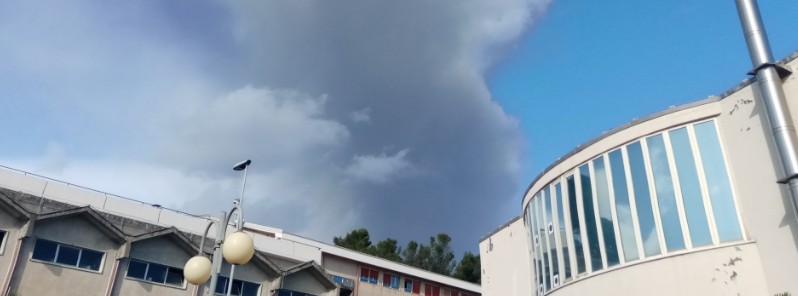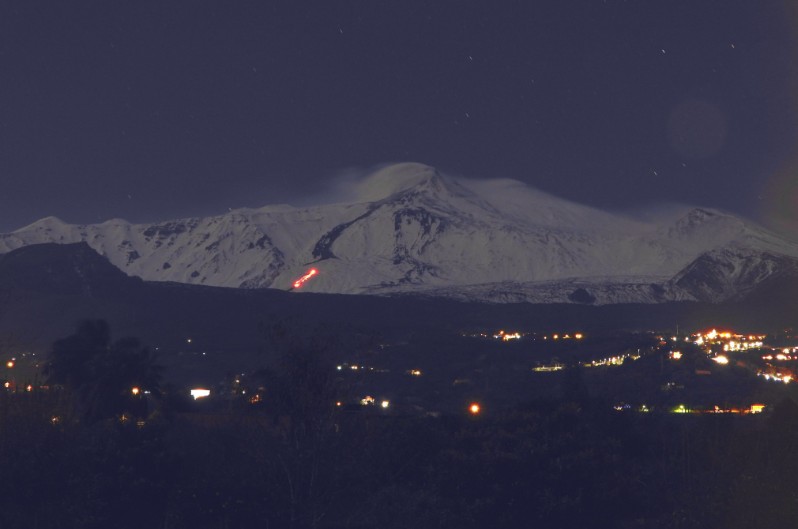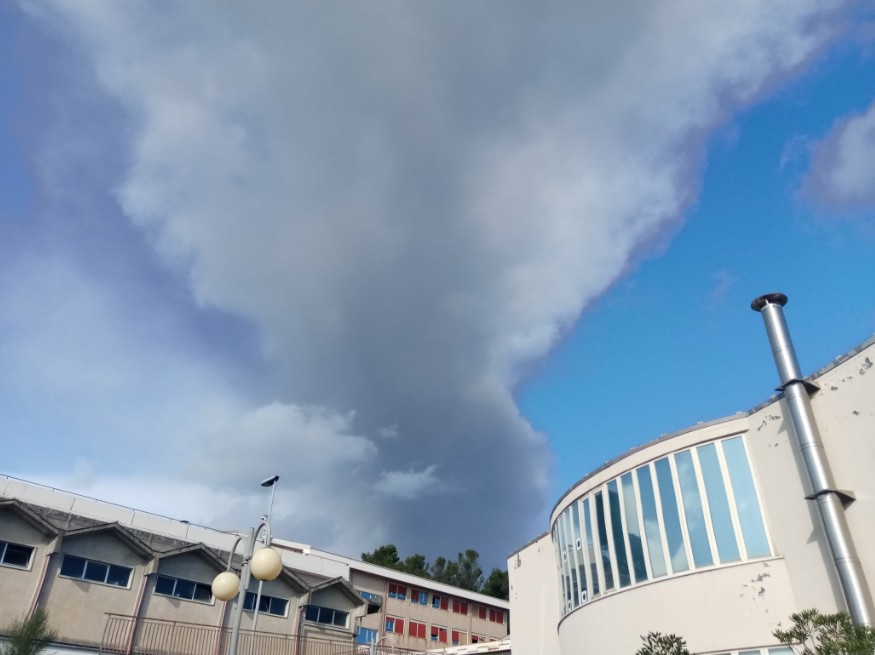Explosive activity resumes at Etna with heavy ash emission, Aviation Color Code raised to Red, Italy

Explosive activity accompanied by abundant ash emission resumed at Etna volcano at 11:15 UTC on December 14, 2021. Ash is dispersing south of the crater.
Today's activity comes just a day after a small lava flow appeared at a new vent on Etna's eastern flank. The flow settled at an estimated altitude between 1 700 – 1 800 m (5 600 – 5 900 feet) a.s.l.1
This activity was accompanied by a gradual increase in the average amplitude of volcanic tremor to high values.

Image credit: INGV, Boris Behncke
Explosive activity at the volcano resumed at 11:15 UTC on December 14.
The Aviation Color Code was raised from Orange to Red at 11:54 UTC after very strong ash emission to 5.5 km (18 000 feet) a.s.l.

Image credit: INGV, Boris Behncke
"The phenomenon is observed by visible and thermal surveillance cameras from 11:15 UTC," Etna Volcano Observatory said.2
Etna, emissione cenere : visibile nube da Cratere Sud Est #etna #cenere #colata pic.twitter.com/G6AJlT8R28
— Local Team (@localteamtv) December 14, 2021
Geological summary
Mount Etna, towering above Catania, Sicily's second-largest city, has one of the world's longest documented records of historical volcanism, dating back to 1500 BCE.
Historical lava flows of basaltic composition cover much of the surface of this massive volcano, whose edifice is the highest and most voluminous in Italy.
The Mongibello stratovolcano, truncated by several small calderas, was constructed during the late Pleistocene and Holocene over an older shield volcano. The most prominent morphological feature of Etna is the Valle del Bove, a 5 x 10 km (5.1 x 6.2 miles) horseshoe-shaped caldera open to the east.
Two styles of eruptive activity typically occur at Etna. Persistent explosive eruptions, sometimes with minor lava emissions, take place from one or more of the three prominent summit craters, the Central Crater, NE Crater, and SE Crater (the latter formed in 1978).
Flank vents, typically with higher effusion rates, are less frequently active and originate from fissures that open progressively downward from near the summit (usually accompanied by strombolian eruptions at the upper end).
Cinder cones are commonly constructed over the vents of lower-flank lava flows. Lava flows extend to the foot of the volcano on all sides and have reached the sea over a broad area on the SE flank.3
References:
1 COMUNICATO ETNA [AGGIORNAMENTO n. 527] – INGV
2 VOLCANO OBSERVATORY NOTICE FOR AVIATION (VONA) – Issued: 20211214/1154Z – Etna Volcano Observatory
3 Etna – Geological summary – GVP
Featured image: INGV, Boris Behncke

Commenting rules and guidelines
We value the thoughts and opinions of our readers and welcome healthy discussions on our website. In order to maintain a respectful and positive community, we ask that all commenters follow these rules.